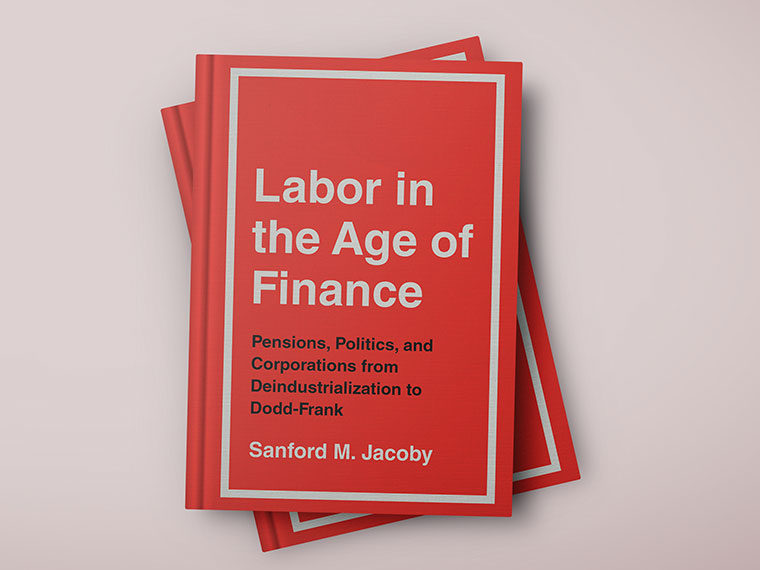Caribbean plantation owners, faced with slavery’s end, enacted legal barriers to employment elsewhere
Informed workers in today’s economy know that their employer may be actively lobbying government to limit employees’ rights. Companies seek to limit union organizing and collective bargaining powers in order to hold down pay; to relax safety and environmental regulations meant in part to protect workers; and to enforce non-compete provisions that can hold down industry pay and narrow workers’ opportunities.
Geographic mobility and a robust and competitive market for labor somewhat limit companies’ power in this area. But suppose, as a worker, you were stuck on an island and a small group of employers exercised near total control over the labor market.
That’s the situation studied in a National Bureau of Economic Research working paper by UCLA Anderson’s Christian Dippel, Stanford’s Avner Greif and University of Toronto’s Dan Trefler. Former slave owners in the British West Indies exchanged their whips and chains for forms of “legal coercion” to keep workers on their plantations long after the abolition of slavery in 1838 (a quarter century before U.S. abolition).
Opt In to the Review Monthly Email Update.
More subtly, in today’s economy, wages in some locales and for some skills are growing more slowly because mergers and other factors have given some employers something akin to monopoly power in the provision of labor, a phenomenon known as monopsony. A nurse, say, at a rural county’s only hospital is captive to that employer, and likely is paid less than a nurse in a competitive labor market. The former slave owners used a set of laws to attain monopsony power.
The 14 Caribbean islands studied, by 1838, accounted for 17 percent of world sugar output. Sugar was a hugely labor-intensive crop, and the islands’ combined population was about 750,000, only about 10 percent white. Sugar prices were high, so plantation owners had abundant cash to put to use influencing labor laws and an enormous incentive to maintain the status quo.
Still, as had been expected, “when emancipation finally came on August 1, 1838, former slaves immediately fled the plantations,” the authors write. Half were gone by fall. By spring, though, lacking work elsewhere, many returned to work the plantations — and wages rose sharply.
It seemed as if a functioning labor market, of sorts, was developing. But by 1848, the authors report, wages fell back considerably. What happened? For many workers, because of laws enacted at the employers’ urging, among the likeliest alternatives to low-paying plantation work was jail.
Planters, who dominated the islands’ legislatures and had close ties to local law enforcement, exerted their power based on five primary factors, according to the researchers: 1) laws restricting worker access to affordable land with clear legal title; 2) taxes that penalized small farmers; 3) tough penalties for squatters on abandoned estates or queen’s land; 4) selective taxation of imports to the detriment of small farmer crops; and 5) harsh treatment of people who violated employment contracts, missed work or were found guilty of trespassing or squatting.
The authors estimated at least two-thirds of incarcerations on the islands were the result of legal coercion of workers. So prevalent was jailing at the behest of plantation owners that the authors use incarceration as a measurement of labor market control in the islands.
The islands included in this study were Antigua, Barbados, Guyana, St. Kitts, Nevis, St. Lucia, Trinidad, Tobago, Jamaica, Virgin Islands, Grenada, Dominica, St. Vincent and Montserrat. Although they varied in size and population, they were similar in economic makeup, based primarily on an agrarian economy dominated by sugar cane production. They also had comparable legal and institutional frameworks put in place by the British and controlled by white plantation owners.
The researchers studied wages, labor laws and the sugar market over a 76-year period, 1838 to 1913. It appears that the collapse of sugar prices and decline of the sugar industry on the islands finally sapped plantation owners’ influence. Slowly, former slaves and their offspring shifted into subsistence farming and other work.
By 1913, the islands accounted for just 1 percent of global sugar output. Sugar beet production elsewhere boosted world sugar supplies. And sugar prices were just one quarter of what they’d been in 1838. On the islands, as plantation owners lost their grip on the labor market, wages rose and incarceration rates declined.
As land fell out of sugar production, it became available for tilling by ex-slaves and their offspring. The islands’ agriculture diversified. On Jamaica, with a population of about 380,000 in 1838, peasants left the plantations in droves and either bought small freeholds or squatted. The number of freeholds, just 2,114 in 1838, grew rapidly to 19,397 in 1845, 50,000 in 1860 and 111,957 in 1890.
This growth created its own obstacle to coercive employment: Peasants by 1890 were growing 39 percent of the islands’ exported crops, up from 10.4 percent in 1850. They grew cocoa, bananas and other crops. And thus they became an economic and political force.
Over time, the economies of the islands took divergent tracks, which the authors attribute, in part, to the varying ability of the plantation owners to maintain a low-cost labor pool. Their results are supported by other studies, which showed that the Caribbean labor “drift from the estates” was lowest in Antigua, St. Kitts and Barbados, the three islands where the plantation system survived the longest.
According to Dippel, Greif and Trefler’s analysis, in Grenada, where the plantation crops’ share of exports had shrunk to about one-quarter by 1913, over the 76 years, wages increased 38 percent more than in Barbados, where the plantation system continued to dominate the economy.
Featured Faculty
-
Christian Dippel
Assistant Professor of Economics
About the Research
Dippel, C., Greif, A., & Trefler, D. (2018) Outside options, coercion and wages: Removing the sugar coating.






